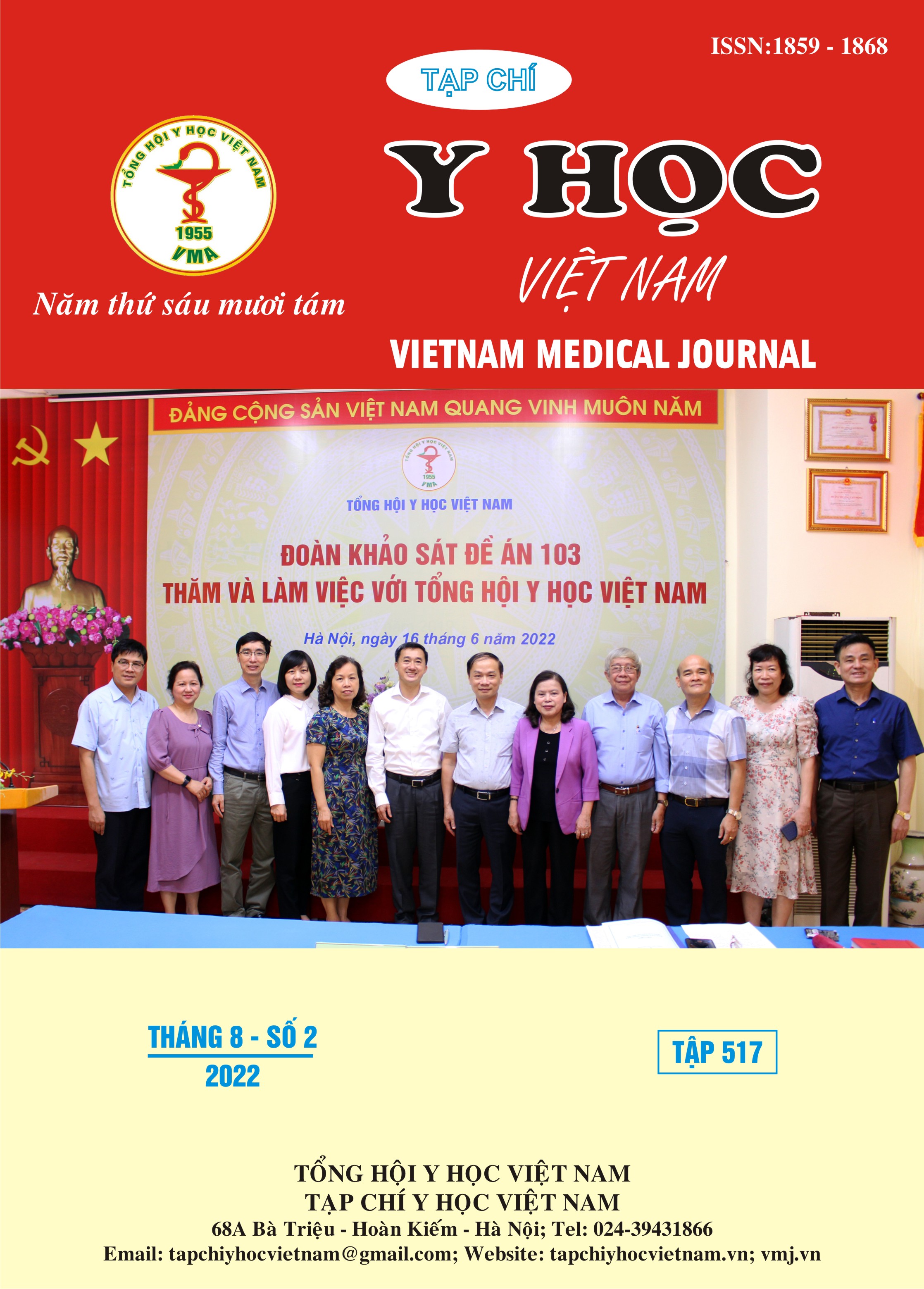CLINICAL AND PARACLINICAL FEATURES IN PATIENTS WITH HYPERTRIGLYCERIDEMIA INDUCED ACUTE PANCREATITIS ACCORDING TO THE CLASSIFICATION OF HYPERTRIGLYCERIDEMIA BY THE 2010 ENDOCRINE SOCIETY
Main Article Content
Abstract
Backgrounds: Hypertriglyceridemia induced acute pancreatitis (HTGP) was associated with increased risk of local complications, recurrent acute panpcreatitis, the frequence of other complications and high mortality as compared to other causes. Determining factors associated with the severity of hypertriglyceridemia (HTG) in patients with HTGP was necessary and important in management of patients with acute pancreatitis. Oblective: To assess the relationship between clinical, subclinical factors and outcomes in patients with hypertriglyceridemia induced acute pancreatitis (HTGP) with the severity of hypertriglyceridemia (HTG) by the 2010 endocrine society. Methods: We prospectively analyzed a total of 132 patients with HTGP from January 2017 to May 2019 at Cho Ray Hospital. HTGP patients were divided into two groups according to the grades of hypertriglyceridemia (HTG) by Endocrine Society [4]: very severe HTG (³2000 mg/dL) and severe HTG (1000 – 1999 mg/dL). Serum TG levels measured within 48 hours of admission. We analyzed the differences between two groups of patients, including general infomation, clinical characteristics, biochemical data and outcomes. Results: Comparing with the severe HTG group, patients with the very svere HTG had significantly higher level of hemoglobin (Hb) (p=0.017), lower levels of prothrombin time (PT) (p=0.001) and creatinine (p=0.011). The prevalence of dyslipidemia was significantly high in the very svere HTG group (p=0.022). Multivariate analysis demonstrated that history of hypertension, levels of C-reactive protein at 48 hours post-hospitalization (CRP48), and levels of Hb and PT were statistically significant relating with the very severe HTG (p<0.05). Conclusions: In patients with HTGP, there were significantly higher of Hb and lower of PT, creatinine in patients with the very severe HTG as compared to the severe HTG. The very severity of HTG was significantly associated with history of dyslipidemia. According to the multivariate analysis, history of hypertension, levels of CRP48 and levels of Hb and PT were significant related to the very severe HTG (p<0.05). Hypertriglyceridemia induced acute pancreatitis has a clinical presentation similar to that of general acute pancreatitis.
Article Details
Keywords
hypertriglyceridemia induced acute pancreatitis, very severe hypertriglyceridemia
References
2. Võ Thị Lương Trân (2018), "So sánh đặc điểm lâm sàng, cận lâm sàng của viêm tụy cấp do tăng Triglyceride máu với viêm tụy cấp do nguyên nhân khác", Tạp chí Y học TP. Hồ Chí Minh, tập 22 (2), pp. 328.
3. Berglund L. et al (2012), "Evaluation and treatmJHent of hypertriglyceridemia: an Endocrine Society clinical practice guideline", J Clin Endocrinol Metab, 97 (9), pp. 2969-2989.
4. Cameron J. L. et al (1973), "Acute pancreatitis with hyperlipemia: the incidence of lipid abnormalities in acute pancreatitis", Ann Surg, 177 (4), pp. 483-489.
5. Fortson M. R. et al (1995), "Clinical assessment of hyperlipidemic pancreatitis", Am J Gastroenterol, 90 (12), pp. 2134-2139.
6. He W. H. et al (2016), "Comparison of severity and clinical outcomes between hypertriglyceridemic pancreatitis and acute pancreatitis due to other causes", Zhonghua Yi Xue Za Zhi, 96 (32), pp. 2569-2572.
7. Kim J. A. et al (2015), "Influence of blood lipids on global coagulation test results", Annals of laboratory medicine, 35 (1), pp. 15-21.
8. Samar F. (2014), "Correlation of CRP, fasting serum triglycerides and obesity as cardiovascular risk factors", J Coll Physicians Surg Pak, 24 (5), pp. 308-313.
9. Scherer J. et al. (2014), "Issues in hypertriglyceridemic pancreatitis: an update", J Clin Gastroenterol, 48 (3), pp. 195-203.
10. Seo D. et al (2017), "Estrogen-induced acute pancreatitis: A case report and literature review", Obstetrics & gynecology science, 60 (5), pp. 485-489.


